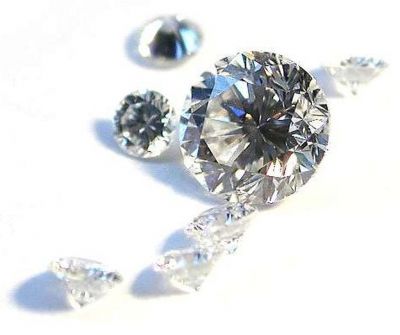Diamonds are microelectronics' best friend

Brillanten
By Mario Sarto (Self-photographed) [GFDL (http://www.gnu.org/copyleft/fdl.html) or CC-BY-SA-3.0 (http://creativecommons.org/licenses/by-sa/3.0/)], via Wikimedia Commons
Diamonds do not have to be large to be valuable, at least to scientists. Nanocrystalline diamond (NCD), superior to silicon for use in microelectromechanical systems (MEMS), was exploited in novel MEMS devices, attracting large industrial investment.
The resistance of diamond to elastic (reversible) shape changes under
loading (high Young's modulus) makes possible very-high–frequency
resonators with high-quality factors. Conveniently, NCD is also
compatible with silicon complementary metal oxide semiconductor
technology, a key advantage over many other MEMS materials.
Scientists launched the EU-funded project 'Microelectromechanical
systems from nanocrystalline diamond' (DIAMEMS) largely to optimise NCD
growth and planarisation. The ability to produce smooth and continuous
NCD covering large areas and exhibiting bulk diamond properties could
significantly reduce the price of current applications relying on bulk
diamond. It could also open the door to new applications outside the
MEMS field, such as tribological coatings.
Optimised nucleation and chemical vapour deposition at relatively
low temperatures (400 degrees Celsius) led to uniform NCD films with
thicknesses of 30 nm. Planarisation to very-low–roughness values via
chemo-mechanical polishing resulted in a high-profile publication.
Integration of aluminium nitride (AlN), a ceramic widely used in
microelectronics, was accomplished in two different ways. The first more
traditional method growing AlN on the polished NCD surface led to
surface acoustic wave devices (often used as high-frequency filters or
oscillators) operating at frequencies in excess of 15 GHz. As
high-precision pressure sensors capable of withstanding harsh
environments, their presentation resulted in investment by a very large
telecommunications company. This approach resulted in three more
publications.
The second method manipulated the voltage difference between the
surface of the NCD seeds and the bulk deposition solution (zeta
potential). Removing the planarisation step reduces costs considerably.
This approach led to demonstration of high-frequency MEMS. A total of
six publications resulted from work on AlN and NCD.
Doping or addition of impurities such as boron can transform NCD
from one of the best electrical insulators to a superconductor.
Investigations exploiting this phenomenon with MEMS led to demonstration
of a superconducting nanoresonator and yet another publication.
DIAMEMS fully demonstrated the utility of nano-scale diamond in
electronic devices, opening the door to major cost reductions in a
number of fields. As seen by major industrial investment in continued
development, the outcomes will have important socioeconomic impact.
published: 2015-03-25

